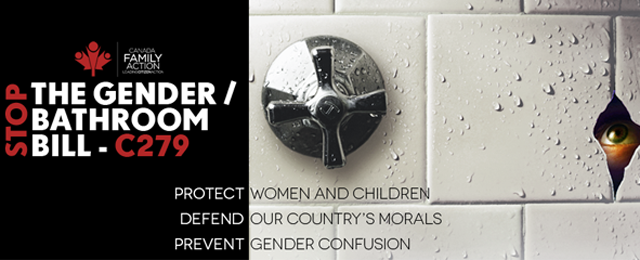
For years, efforts to pass laws protecting LGBT people from discrimination in employment and public accommodations have been derailed by the right-wing myth that sexual predators will exploit those laws to sneak into women's restrooms. In 2014, that myth finally began to lose steam.
Anti-LGBT activists have had tremendous success defeating non-discrimination protections for LGBT people by fearmongering about women's restrooms. The typical talking point goes like this: If it becomes illegal to discriminate against LGBT people, male sexual predators will pretend to be transgender in order to enter women's restrooms and commit crimes with impunity.
That horror story, as absurd as it is, has been around since the inception of the modern fight for LGBT equality. It's a wildly popular tactic on the right, largely due to its effectiveness. It's a talking point that touches on concerns about privacy, child safety, and sexual assault, and it's been extremely useful in persuading even moderate voters and politicians to vote against legal protections for the LGBT community.

It's also a talking point that's been thoroughly debunked by law enforcement experts, advocates for victims of sexual abuse, and government officials in states and cities that have had LGBT non-discrimination laws in place for years.
But given the public's general lack of familiarity with transgender people and their experiences, it hasn't been hard to get voters more concerned with the prospect of wig-donning criminals sneaking into public bathrooms.
The myth has been used to attack all kinds of pro-LGBT protections -- city non-discrimination ordinances, federal employment law, and school diversity policies. It's not unusual for anti-LGBT conservatives to simply rebrand broad non-discrimination laws as “bathroom bills” - phrasing that was unfortunately often adopted by news outlets.
That trend was strong in 2014, with conservative media outlets like Fox News regularly peddling “bathroom bill” talking points to attack non-discrimination laws like the Houston Equal Rights Ordinance.
But the “bathroom bill” horror story appears to have lost some of the weight it once carried. Houston, San Antonio, Miami-Dade County, Plano, Springfield, Missouri, and other cities all enacted non-discrimination laws protecting transgender people from discrimination in public accommodations. The Cleveland City Council is currently considering an ordinance that would explicitly repeal the bathroom exemption of its non-discrimination law -- a proposition that would have been dead in the water just a few years ago. Schools across the country have adopted policies allowing transgender students to use the locker rooms that correspond with their gender identity, and the Department of Education's official recommendation for public schools is now in line with that position.
And even on Fox News, fearmongering about trans-inclusive bathroom facilities is starting to fall on deaf ears. In one especially cringe-worthy segment in July, Fox's Steve Doocy tried unsuccessfully to bait a family of Fox viewers into condemning Illinois State University's gender-neutral bathrooms.

The slow death of the bathroom myth is largely due to two factors. First, the growing visibility of transgender Americans like Laverne Cox, Chaz Bono, and Janet Mock -- people who have helped average Americans empathize with the transgender community.
Second, the experiences of cities and states who have now had trans-inclusive non-discrimination policies in place for years. The sky hasn't fallen in places where transgender people are allowed to use restrooms that correspond with their gender identity, which is why proponents of non-discrimination laws are usually quick to point to the successes of those laws in nearby cities. In Maryland, for example, the Montgomery County police chief argued in favor of a state non-discrimination law, stating that bathroom horror stories hadn't come true since his county adopted its non-discrimination ordinance. Empirical evidence is typically a powerful antidote to conservative fearmongering.
Which is not to say that the “bathroom bill” horror story is going to disappear anytime soon, especially now that national LGBT groups are gearing up to push for a federal LGBT civil rights law that will likely cover places of public accommodation.
But the talking point is slowly falling apart. What once used to be a silver bullet for anti-LGBT activists is becoming a kind of joke, much in the same way that fears about same-sex marriage creating a slippery slope are now more of a punchline than a serious policy argument.